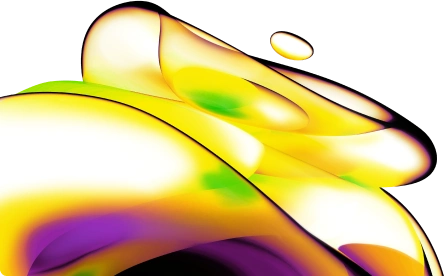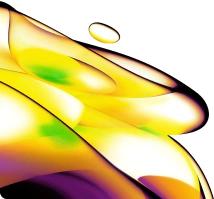

AlphaLISA SureFire Ultra Human and Mouse Total IRS1 Detection Kit, 100 assay points
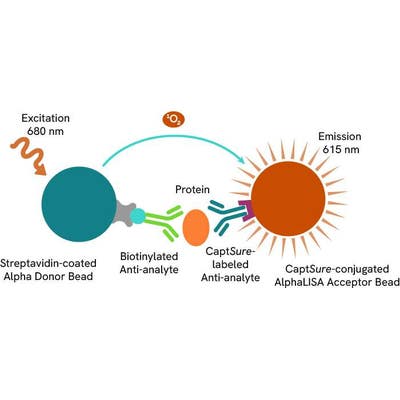
AlphaLISA SureFire Ultra Human and Mouse Total IRS1 Detection Kit, 100 assay points
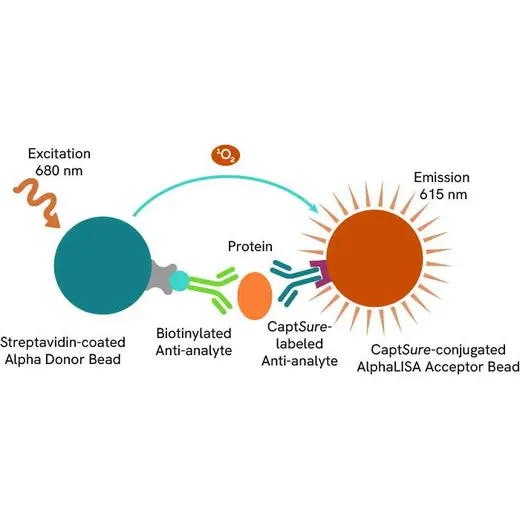

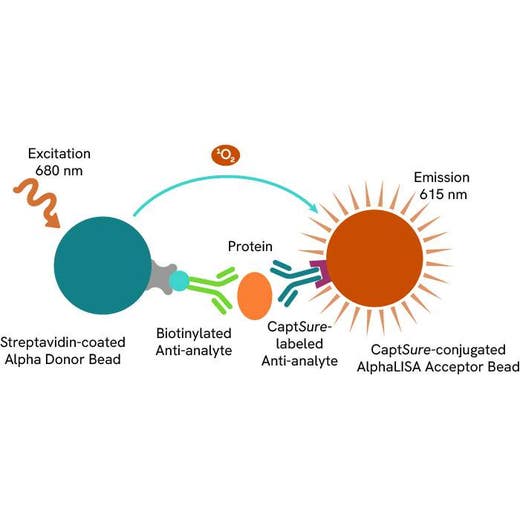

The AlphaLISA™ SureFire® Ultra™ Human and Mouse Total IRS1 assay is a sandwich immunoassay for quantitative detection of total IRS1 cellular lysates using Alpha Technology.
| Feature | Specification |
|---|---|
| Application | Cell Signaling |
| Protocol Time | 2h at RT |
| Sample Volume | 30 µL |
The AlphaLISA™ SureFire® Ultra™ Human and Mouse Total IRS1 assay is a sandwich immunoassay for quantitative detection of total IRS1 cellular lysates using Alpha Technology.


AlphaLISA SureFire Ultra Human and Mouse Total IRS1 Detection Kit, 100 assay points


AlphaLISA SureFire Ultra Human and Mouse Total IRS1 Detection Kit, 100 assay points


Product information
Overview
Insulin receptor substrate 1 (IRS1) is a key adaptor protein that transmits signals from insulin and insulin-like growth factor (IGF) receptors to downstream pathways, including PI3K/AKT and MAPK, regulating metabolism, proliferation, and survival. Upon insulin binding to its receptor, the receptor's tyrosine kinase activity is activated, leading to the phosphorylation of IRS1 on multiple tyrosine residues. These phosphorylated sites serve as docking points for various signaling molecules, particularly those containing SH2 domains. Dysregulation of IRS1 is implicated in metabolic disorders such as insulin resistance and type 2 diabetes, as well as oncogenesis, where it contributes to tumor growth in breast, prostate, and colorectal cancers.
The AlphaLISA SureFire Ultra Human and Mouse Total IRS1 Detection Kit is a sandwich immunoassay for the quantitative detection of total IRS1 in cellular lysates, using Alpha Technology.
Formats:
- The HV (high volume) kit contains reagents to run 100 wells in 96-well format, using a 60 μL reaction volume.
- The 500-point kit contains enough reagents to run 500 wells in 384-well format, using a 20 μL reaction volume.
- The 10,000-point kit contains enough reagents to run 10,000 wells in 384-well format, using a 20 μL reaction volume.
- The 50,000-point kit contains enough reagents to run 50,000 wells in 384-well format, using a 20 μL reaction volume.
AlphaLISA SureFire Ultra kits are compatible with:
- Cell and tissue lysates
- Antibody modulators
- Biotherapeutic antibodies
AlphaLISA SureFire Ultra kits can be used for:
- Cellular kinase assays
- Receptor activation studies
- High-throughput screening for preclinical studies
Specifications
| Application |
Cell Signaling
|
|---|---|
| Automation Compatible |
Yes
|
| Brand |
AlphaLISA SureFire Ultra
|
| Detection Modality |
Alpha
|
| Protocol Time |
2h at RT
|
| Sample Volume |
30 µL
|
| Shipping Conditions |
Shipped in Blue Ice
|
| Target |
IRS1
|
| Target Class |
Phosphoproteins
|
| Target Species |
Human
Mouse
|
| Technology |
Alpha
|
| Therapeutic Area |
Metabolism/Diabetes
|
| Unit Size |
100 assay points
|
How it works
Total-AlphaLISA SureFire Ultra assay principle
The Total-AlphaLISA SureFire Ultra assay measures the expression level of a protein target in a cell lysate.
The Total-AlphaLISA SureFire Ultra assay uses two antibodies which recognize two different distal epitopes on the targeted protein. AlphaLISA assays require two bead types: Acceptor and Donor beads. Acceptor beads are coated with a proprietary CaptSure™ agent to specifically immobilize the assay specific antibody, labeled with a CaptSure tag. Donor beads are coated with streptavidin to capture one of the detection antibodies, which is biotinylated. In the presence of targeted protein, the two antibodies bring the Donor and Acceptor beads in close proximity whereby the singlet oxygen transfers energy to excite the Acceptor bead, allowing the generation of a luminescent Alpha signal. The amount of light emission is directly proportional to the quantity of protein present in the sample.

Total-AlphaLISA SureFire Ultra two-plate assay protocol
The two-plate protocol involves culturing and treating the cells in a 96-well plate before lysis, then transferring lysates into a 384-well OptiPlate™ plate before the addition of Total-AlphaLISA SureFire Ultra detection reagents. This protocol permits the cells viability and confluence to be monitored. In addition, lysates from a single well can be used to measure multiple targets.
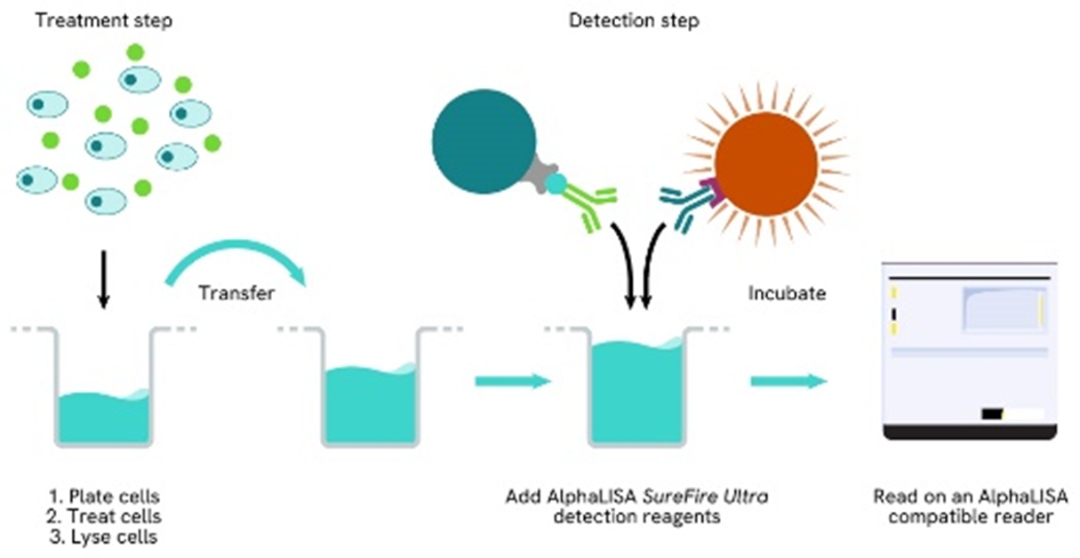
Total-AlphaLISA SureFire Ultra one-plate assay protocol
Detection of Total target protein with AlphaLISA SureFire Ultra reagents can be performed in a single plate used for culturing, treatment, and lysis. No washing steps are required. This HTS designed protocol allows for miniaturization while maintaining AlphaLISA SureFire Ultra quality.
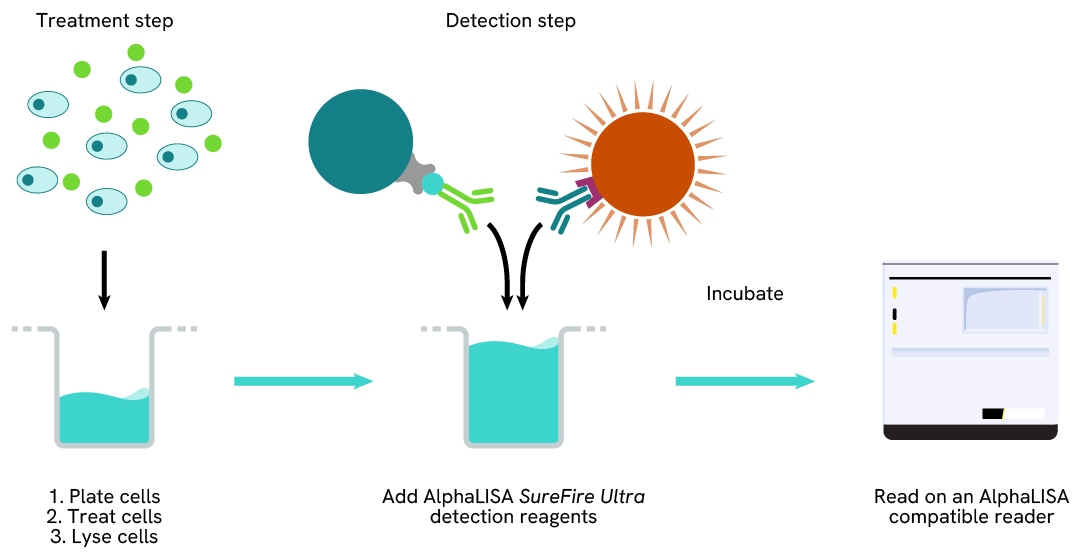
Assay validation
Validation of Total IRS1 in endogenous cellular models
A431 cells were seeded in a 96-well plate (40,000 cells/well) in complete medium, and incubated overnight at 37°C, 5% CO2. The cells were starved for 2 hours and then treated with increasing concentrations of EGF for 30 minutes.
After treatment, the cells were lysed with 100 µL of Lysis Buffer for 10 minutes at RT with shaking (350 rpm). IRS1 Phospho (Ser612) and Total levels were evaluated using respective AlphaLISA SureFire Ultra assays. For the detection step, 10 µL of cell lysate (approximately 4,000 cells) was transferred into a 384-well white OptiPlate, followed by 5 µL of Acceptor mix and incubated for 1 hour at RT. Finally, 5 µL of Donor mix was then added to each well and incubated for 1 hour at RT in the dark. The plate was read on an Envision using standard AlphaLISA settings.
EGF triggered a dose-dependent increase in the levels of Phospho (Ser612) IRS1 with no significant change in Total levels.
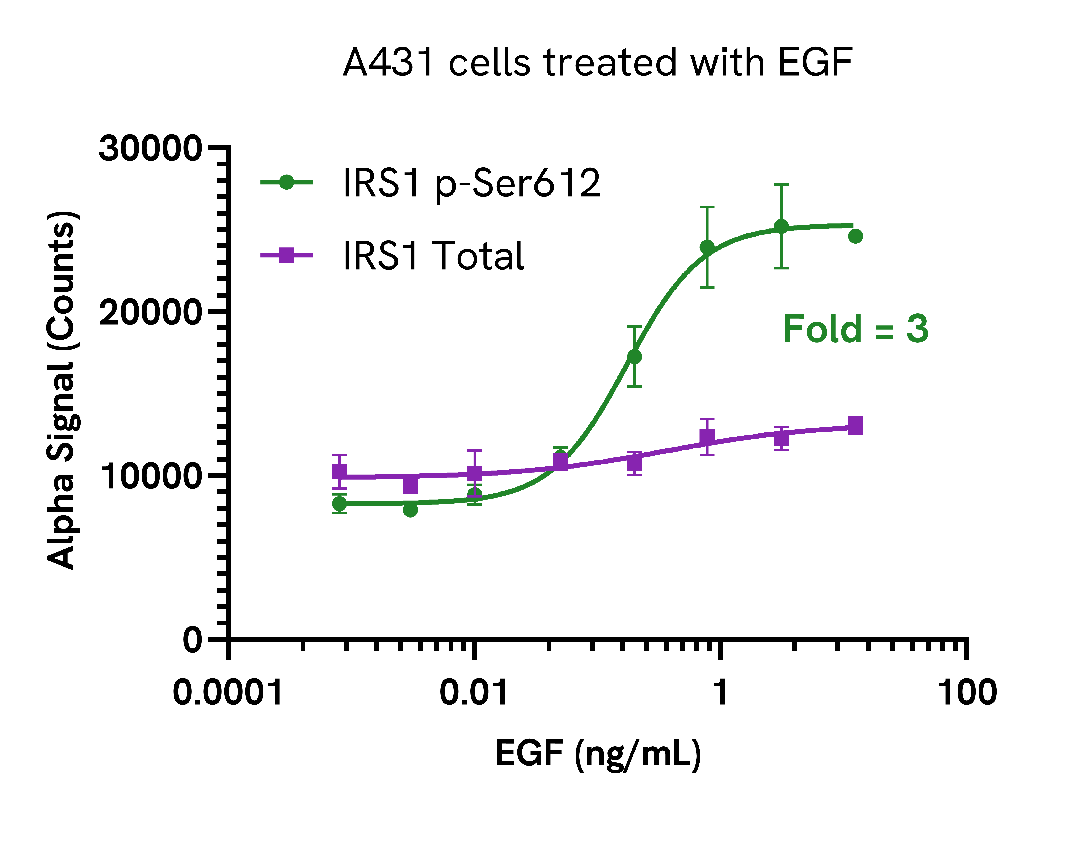
HeLa cells were seeded in a 96-well plate (40,000 cells/well) in complete medium, and incubated overnight at 37°C, 5% CO2. The cells were starved for 24 hours and then treated with increasing concentrations of PMA for 30 minutes.
After treatment, the cells were lysed with 100 µL of Lysis Buffer for 10 minutes at RT with shaking (350 rpm). IRS1 Phospho (Ser612) and Total levels were evaluated using respective AlphaLISA SureFire Ultra assays. For the detection step, 10 µL of cell lysate (approximately 4,000 cells) was transferred into a 384-well white OptiPlate, followed by 5 µL of Acceptor mix and incubated for 1 hour at RT. Finally, 5 µL of Donor mix was then added to each well and incubated for 1 hour at RT in the dark. The plate was read on an Envision using standard AlphaLISA settings.
PMA triggered a dose-dependent increase in the levels of Phospho (Ser612) IRS1 while Total levels remained unchanged.
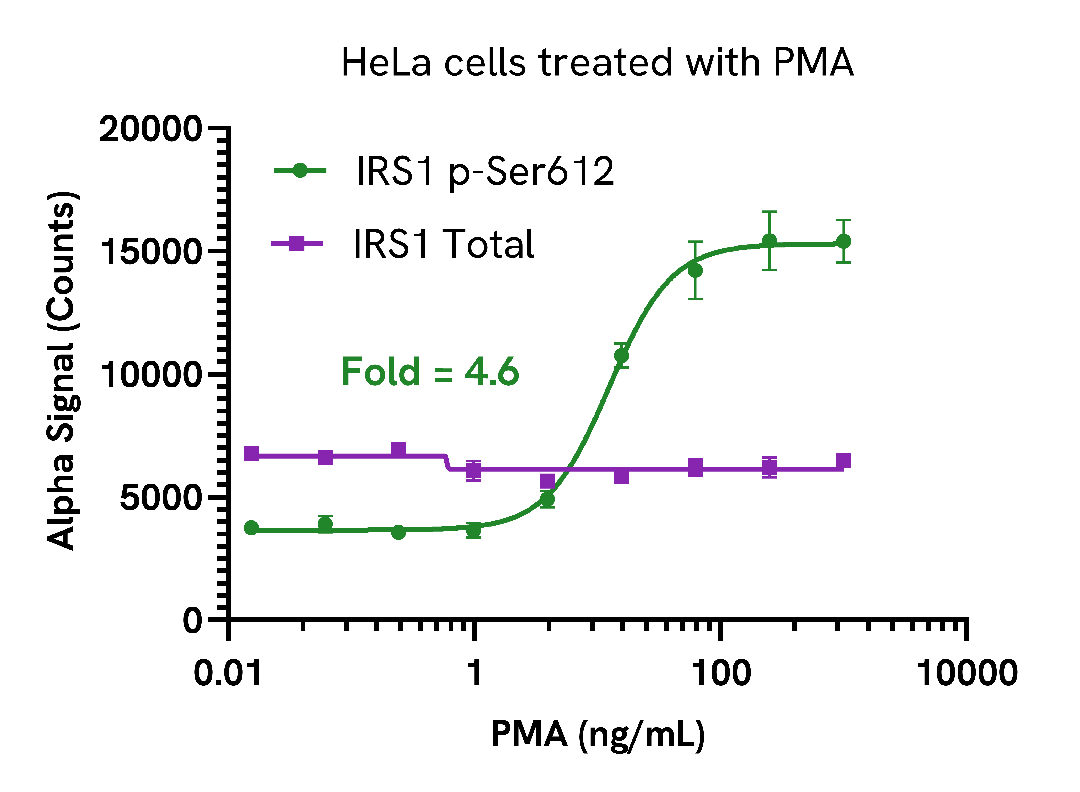
Validation of Total IRS1 in Staurosporine treated cells
A431 cells were seeded in a 96-well plate (40,000 cells/well) in complete medium, and incubated overnight at 37°C, 5% CO2. The cells were treated with increasing concentrations of Staurosporine for 1 hour.
After treatment, the cells were lysed with 100 µL of Lysis Buffer for 10 minutes at RT with shaking (350 rpm). IRS1 Phospho (Ser612) and Total levels were evaluated using respective AlphaLISA SureFire Ultra assays. For the detection step, 10 µL of cell lysate (approximately 4,000 cells) was transferred into a 384-well white OptiPlate, followed by 5 µL of Acceptor mix and incubated for 1 hour at RT. Finally, 5 µL of Donor mix was then added to each well and incubated for 1 hour at RT in the dark. The plate was read on an Envision using standard AlphaLISA settings.
Staurosporine triggered a dose-dependent decrease in the levels of Phospho (Ser612) IRS1 while Total levels remained unchanged.
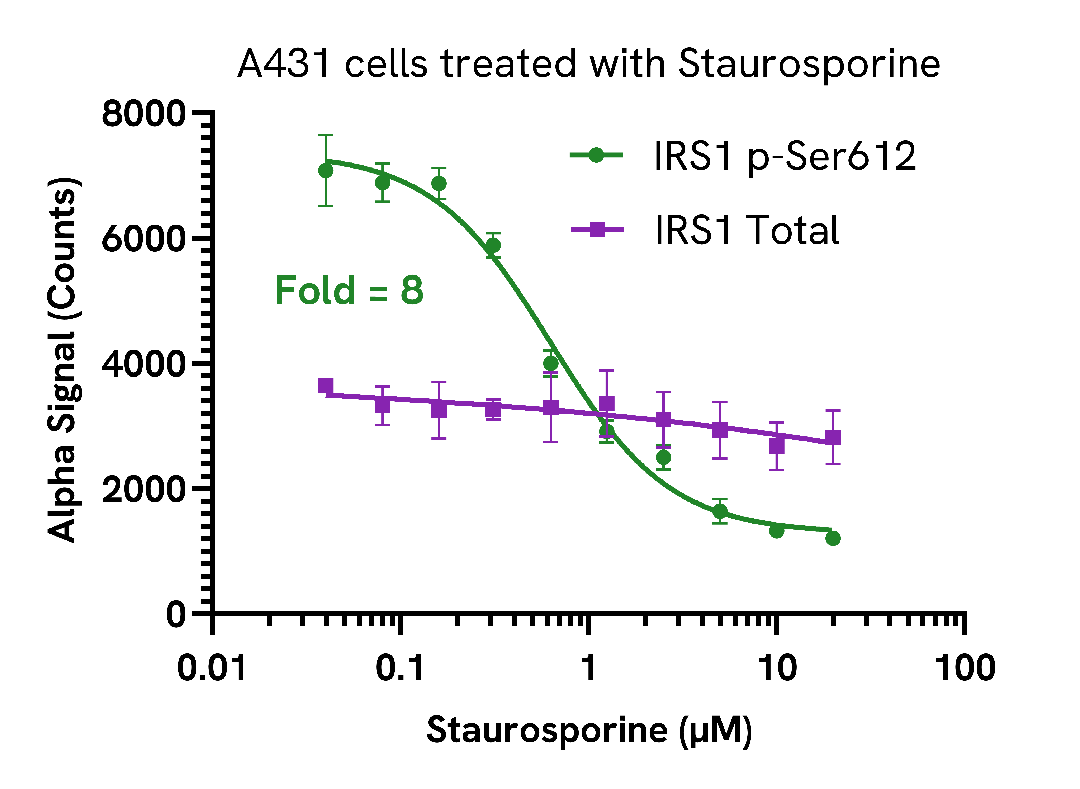
Assay versatility
Expression of IRS1 in various cell lines
Adherent cell lines were seeded in a 96-well plate (40,000 cells/well) and incubated overnight at 37°C, 5% CO2. Cells were lysed with 100 µL of Lysis Buffer for 10 minutes at RT with shaking (350 rpm).
Suspension cell lines were seeded in a 96-well plate (400,000 cells/well) and lysed with 100 µL of Lysis Buffer for 10 minutes at RT with shaking (350 rpm).
IRS1 levels were evaluated using the AlphaLISA SureFire Ultra assay. For the detection step, 10 µL (approximately 4,000 adherent cells and 40,000 suspension cells) of cell lysate was transferred into a 384-well white OptiPlate, followed by 5 µL of Acceptor Mix and incubated for 1 hour at RT. Finally, 5 µL of Donor Mix was then added to each well and incubated for 1 hour at RT in the dark. The plate was read on an Envision using standard AlphaLISA settings.
Variable IRS1 expression was observed in various cell lines.
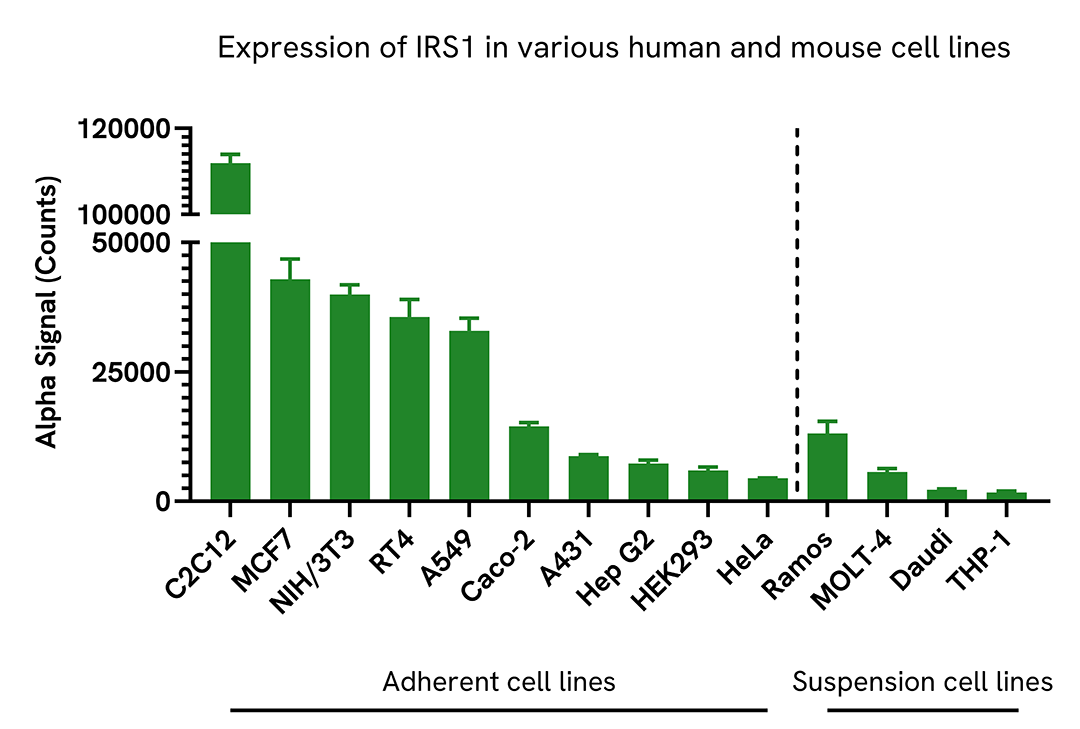
Loading...


How can we help you?
We are here to answer your questions.
